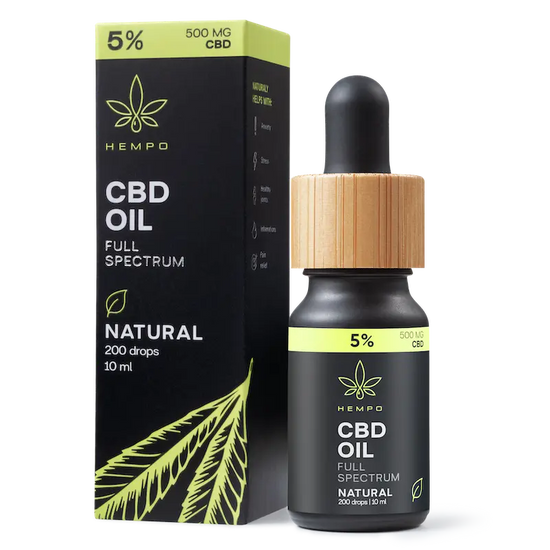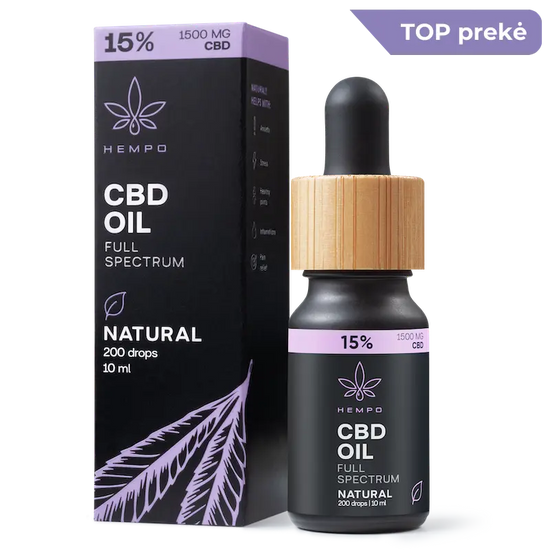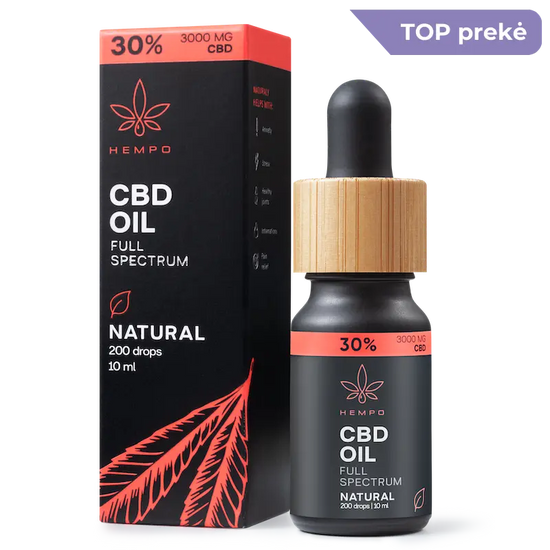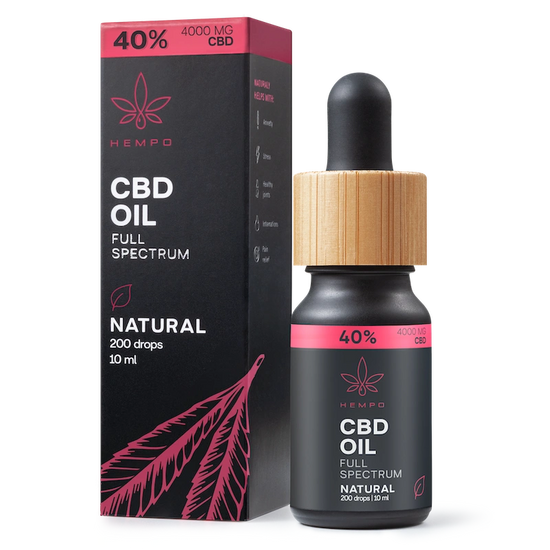CBD oil color: why is it not an indicator of quality?
Some people believe that a darker color of CBD oil means a higher quality product or greater potency. However, this is a misconception. While the color of CBD oil can vary from clear or light gold to dark green, brown, or almost black, this does not mean that a particular shade of CBD oil is more effective than another.
In this article, you will learn what determines the color of CBD oil and why it is not an accurate indicator of the quality of the product. We will share tips on how to properly store CBD oil to maintain its beneficial properties for as long as possible, and we will explain how the production process affects the final shade of the oil.
Table of Contents
Note: This and other articles on the Hempo's blog are for informational purposes only. According to the European Commission directive, cannabidiol is classified as a 'novel food', therefore CBD products should not be used as a food supplement in Lithuania.

What determines the color of CBD oil?
CBD oil is made by mixing cannabidiol extract with a “carrier” oil. Different extraction methods, the oil used, and additional ingredients determine the final color of the product. The main factors that affect the color of the product are:
- "Carrier" oil;
- Terpenes and flavonoids contained in the product;
- The chosen CBD extraction method;
- Additional filtration, refining;
- External factors (temperature, light, oxygen, etc.).
Carrier oil
In order for CBD to be properly absorbed, cannabidiol extract is mixed with a “carrier” oil. The following oils are commonly used:
-
MCT coconut oil
- MCT coconut oil is clear, so the final CBD oil is usually light or almost colorless;
- Experts consider it one of the best "carrier" oils due to its better absorption of active ingredients.
-
Hemp seed oil
- Naturally darker, so it can give the final product an intense greenish or brown color.
- Naturally darker, so it can give the final product an intense greenish or brown color.
-
Olive oil
- Gives the final product a yellowish-golden hue.
Since the main ingredient of the product is the “carrier” oil, it also determines the appearance of the CBD oil. For example, even pure (clear) CBD isolate will take on a richer hue when mixed with a darker “carrier” oil.
Terpenes and flavonoids
Terpenes are natural aromatic compounds, while flavonoids are substances that give plants their color and flavor. They are abundant in cannabis, so these compounds can determine both the hue and smell of CBD oil, for example:
- Myrcene can give a faint yellowish tint;
- Limonene often gives a light yellow tone;
- Terpinolene can brighten the oil to a light amber color.
High levels of terpenes and flavonoids in the final product usually mean it will be darker, especially if a dark “carrier” oil (such as hemp seed oil) is also used.
CBD extraction method
The CBD extraction process determines how much of the plant material will remain in the final product. The most popular CBD extraction methods are:
-
Supercritical CO2 extraction
- Considered the "cleanest" and most effective method;
- Allows for precise separation of plant components - additional distillation can be applied later;
- A golden or light yellow product is often obtained.
-
Ethanol extraction
- Ethanol is used, which extracts not only beneficial compounds but also chlorophyll from the cannabis plant;
- The extract obtained in this way usually has a greenish tint, while the oil can be richer and darker.
Regardless of the extraction method, manufacturers may additionally filter the extract. This removes some of the pigmented substances (such as chlorophyll), making the CBD oil lighter in color.
Does the color of CBD oil matter in terms of quality?
The short answer is: no . The color of CBD oil can give you clues about what ingredients were used during the manufacturing process, but the color itself doesn’t reveal whether the oil is “good” or “bad.” Here are the most important things to look for:
- Third-party laboratory testing: always check that the manufacturer provides reliable test results;
- High-quality raw material: it is best when hemp is grown organically and without harmful chemical impurities;
- Proper production process: quality filtration, safe extraction method, quality carrier oils.
Type and color of CBD oil
-
CBD isolate
- In purified form, practically colorless;
- If mixed with a clear "carrier", it will be almost completely transparent;
- Less effective than full- or broad-spectrum CBD oil because it does not contain additional beneficial compounds found in cannabis.
-
Broad spectrum CBD oil
- Similar to full spectrum, but with all traces of THC removed;
- Most often golden or amber due to additional purification and THC removal steps;
- It retains more terpenes and other cannabinoids, so the color may be more intense than that of isolate.
-
Full spectrum CBD oil
- It can range from light brown to dark brown or greenish in color, depending on the filtration and the chosen oil "carrier";
- Contains mostly terpenes and other plant compounds that work synergistically (the so-called " Entourage Effect ").
Why does the color of CBD oil sometimes change?
Even if you buy oil in one shade, its color can change over time. Here are some reasons why this happens:
- Oxygen and light: exposure to air and UV rays may cause the product to darken in color;
- Temperature changes: Storing CBD oil too warm or too cold can change the properties and color of the oil;
- Humidity: High humidity levels can affect the appearance and quality of the product;
- Polyphenol oxidase: This enzyme, when exposed to oxygen and light, can give CBD oil a pink hue.
How to avoid this?
- Keep the bottle tightly closed in the original packaging;
- Avoid direct sunlight: choose dark or opaque bottles;
- Store the product at room temperature, away from sources of heat or cold;
- Store the product in a dry place to avoid mold and other adverse reactions.
Hempo CBD oil – an exceptional quality formula
Hempo CBD products are made using organically grown hemp and a state-of-the-art dual extraction method (including supercritical CO2 extraction). This allows for:
- Achieve a high level of CBD oil purity;
- Preserve valuable terpenes and other beneficial compounds;
- Get a fairly light yellow-golden color.
Each Hempo product is tested in independent laboratories - you can find detailed product certificates here.

Summary
- The color of CBD oil depends on the oil's "carrier", the extraction method, and the abundance of terpenes and flavonoids;
- A darker product color does not necessarily mean greater strength or better quality, and a light shade is in no way an indication of a "weak" product;
- When choosing CBD oil, always check for third-party laboratory testing certificates , pay attention to the product's composition and manufacturing standards;
- Be sure to monitor the smell and expiration date of your CBD oil and store the product in a dark, cool, and dry place.
We invite you to try it!
If you have any questions or are looking for quality CBD products, contact the Hempo team - we will help you choose the most suitable option and answer all your questions. After all, the most important thing is that the CBD oil is safe, tested and effective, and the color of the CBD oil is just an additional feature that does not determine the quality of the product.





